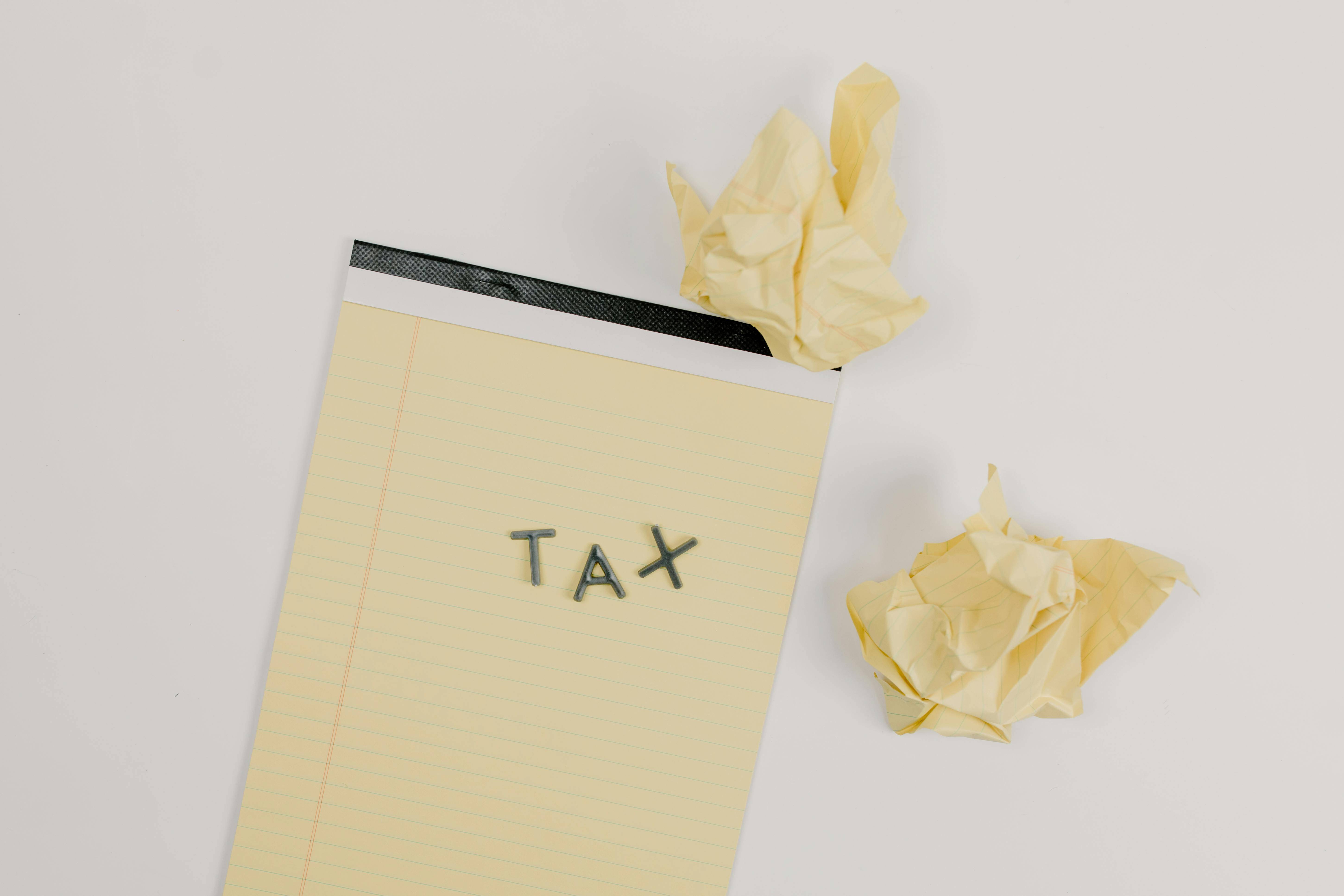Getting sales tax wrong can have huge ramifications for both you and your client.
But despite this, it’s become commonplace to trust a piece of software to handle it all for you. Software that, quite frankly, isn’t fit for purpose. So instead of giving you peace of mind, it actually increases the likelihood of having to face those ramifications.
Just focusing on the financial implications, your client could lose a lot of money because of one small mistake or glitch.
And we’re not just talking dollars and cents here. We're talking tens of thousands, or even hundreds of thousands of dollars lost. That can be the difference between your client turning a profit or turning a loss.
There’s also the potential for penalties and interest charges, legal action, operation distractions, compliance issues, etc.
Or to put it in simpler terms — incorrectly calculating and managing sales tax can put the future of your clients business in jeopardy.
The buck stops with you
It’s not just your client that suffers when things go wrong. You'll ultimately be held accountable for any oversight or miscalculation as the client's CPA, accountant, or bookkeeper. And from our experience, there’s a good chance you’ll be expected to pay if extra money is due under audit.
On top of the financial damage this will inflict on your company, there will also be other indirect ramifications.
It will almost certainly damage your relationship with the client, and you'll have to work hard to earn their trust back (if they give you the chance). Your reputation will also take a big hit as word gets around about what’s happened.
This will put a strain on your relationship with other clients, as well as hurt your chances of winning new business.
I don’t want that, you don’t want that, and your client definitely doesn’t want that. This is why in this blog I’m going to run through the three most expensive mistakes you’re likely to make with sales tax software.
Need help managing sales tax for your clients? Apply to become a partner with TaxValet and see how we can support CPAs like you. Learn more.
Mistake 1 - Using inaccurate nexus tools
Nexus is a huge part of sales tax, so it makes sense that a lot of tax apps will include a free nexus tool.
But by claiming to accurately determine the states your clients have sales nexus in, these tools only create a false sense of security.
In fact, most of these tools only actually cover 'economic nexus', despite there being lots of different ways to get nexus in a state. Here are just a few examples:
- Having a physical presence through storing inventory in a warehouse
- Storing inventory in the state
- Employing contractors or employees in that state
- Attending trade shows
- Utilizing drop shopping partners in that state
- Selling through a marketplace that has nexus
It’s not surprising that these tools focus on economic nexus — it's the newest one and it's the easiest to understand. But that's only one way to get nexus in a state, and it's in no way comprehensive.
So by using their nexus calculators, you're only seeing half the story. Which is dangerous enough, but these economic nexus tools are also inaccurate. They only look at taxable retail sales, which isn't enough to get the full picture.
When you're looking at a state's economic nexus law, there's a lot to understand. Some will be based on gross sales, some on taxable sales, some want you to include marketplace sales and resale orders, and some want you to exclude marketplace sales and resale orders. There are also different exclusions and exemptions that shouldn’t be factored into nexus totals.
It's very complicated.
So if you just calculate based on total sales in the state, you'll probably end up with a false positive.
These tools also don't take into account product taxability. For example, if a state doesn't tax clothing, their calculator might say you have nexus in that state, which might not actually be the case.
All of these things increase the likelihood of a tax collection or audit issue popping up later on. Which brings us back to the ramifications we listed earlier.
You and your clients have to be confident that you're only paying sales tax in the states that are absolutely necessary. That’s the only way to reduce the likelihood of audits, questions, and anything else that can go wrong.
Mistake 2 - Assuming software understands product taxability
Product taxability is whether or not a state charges sales tax on a particular type of product, based on that product's official definition.
For instance, some states have exemptions for dietary supplements, prescription drugs, professional services, etc. But if you get these definitions wrong, it can be very expensive for your clients, and a huge headache to clean up.
The problem is that software can't fully understand the nuances involved to work out whether the products your clients are selling fit within the definition.
An app like TaxJar might have a tax code for ‘Dietary Supplements’, but how does Taxjar define 'Dietary Supplements’? Does it match what it means to your client?
To give you a real-life example, we havea client that sells CBD products, and they classify those products as dietary supplements. But in most states that have a dietary supplement exemption, they don't include CBD oil within that definition.
This means that if our client had relied on a tool like TaxJar, and selected 'Dietary Supplements' for their CBD products, they would have incorrectly not charged sales tax on those items.
If that client then gets audited and it's revealed they've not paid sales tax on maybe millions of dollars of orders, they're in big trouble.
There would be hundreds of thousands of dollars worth of uncollected sales tax, all because you trusted a piece of software to understand the complexities and nuances of product taxability.
The potential for making mistakes, or the situation becoming a hugely expensive problem, is just far too big a gamble to be worth the risk.
It's just not worth rolling the dice when the stakes are that high.
Mistake 3 - Misunderstanding sales tax settings
Sales tax settings are one of the most important aspects of sales tax, but sales tax software pretty much leaves you on your own to sort it out.
It doesn't manage it for you, and most of the time it can’t even calculate the tax for your shopping cart. You have to manually set up the sales tax settings yourself in the shopping carts.
Sorry, I’m getting ahead of myself. In case you don’t know what I’m talking about, I’ll quickly explain what sales tax settings are.
If your client is selling on a platform like Shopify, someone has to manually go into the software and set up how the product should be taxed. So for any state where the client has nexus, and the products are taxable, each product’s sales tax has to be configured.
This includes things like whether it should be set at a lower rate, exemptions, etc.
This isn't always a straightforward process, though. Each individual sales channel has its own challenges. And it's not uncommon for a company to be selling on five to ten different sales channels at the same time.
So every time your client rolls out a new product, it will need to be set up on all the different sales channels manually.
On top of that, someone also has to periodically check in to make sure the sales channels are still accurately collecting the right tax.
But what if your sales channel stops collecting tax on a certain category of product?
Your software can't notify you, because it won't be able to identify that there's a problem. But it will still be calculating how much tax you should be collecting and paying that to the state.
So you end up out of pocket because you're not charging customers for the sales tax, even though you still have to pay it yourself.
This situation isn’t as unlikely as you probably assume, either. There are a number of different things that can go wrong that result in a sales channel not collecting tax.
It could be a glitch with the software itself, a plugin overriding the settings, or even a software update that’s connected to that specific sales channel.
Or it could be something as simple and human as someone making a mistake. Maybe an intern accidentally unchecked the wrong box, or someone mistakenly edits the wrong sales channel settings.
It happens so easily, but if this error or mistake goes unnoticed, it could cost your client hundreds of thousands of dollars.
Whereas if this process was done properly, without relying on flawed software, you can make sure your client is collecting the right amount. This is done by cross-referencing the amount of tax calculated with how much they actually collected.
Disclaimer: Our attorney wanted you to know that no financial, tax, legal advice or opinion is given through this post. All information provided is general in nature and may not apply to your specific situation and is intended for informational and educational purposes only. Information is provided “as is” and without warranty.
What you should do now
- Get a Free Sales Tax Plan and see how Tax Valet can help solve your sales tax challenges.
- Read more articles in our blog.
- If you know someone who’d enjoy this article, share it with them via Facebook, Twitter, LinkedIn, or email.


